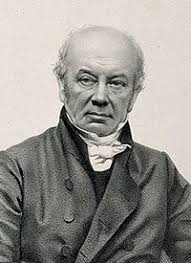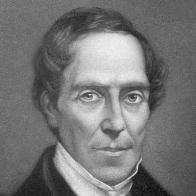“The first proof that giant dinosaurs once walked the earth.”
- Who Discovered it?: William Buckland and Gideon Mantell.
- Year of Discovery: 1824
How was it Discovered?

People had always found fossil bones, but none had correctly identified them as extinct species. In 1677 English man Robert Plot found what 220 years later was identified as the end of the thigh bone of a giant biped carnivorous dinosaur. Plot gained great fame when he claimed it was the fossilized testicles of a giant and said it proved that story giants were real.
Science was clearly still in the dark ages until two English men, working independently, both wrote articles on their discovery of dinosaurs in 1824. They share the credit for discovering dinosaurs.
In 1809 (50 years before Darwin’s discovery of evolution) English country doctor Gideon Mantell lived in Lewes in the Sussex district of England. While visiting a patient one day, Mantell’s wife, Mary Ann, took a short stroll and then presented him with several puzzling teeth she had found. These massive teeth were obviously from an herbivore but were far too large for any known animal. Mantell, an amateur geologist, had been collecting fossil relics of ancient land animals for several years but could not identify these teeth. He returned to the site and correctly identified the rock strata as from the Mesozoic era. Thus, the teeth had to be many millions of years old.

These teeth were not the first large bones Mantell had found, but they were the most puzzling. Mantell took them to famed French naturalist, Charles Cuvier, who thought they came from an ordinary rhinoceros-like animal. Mantell set the teeth aside.
In 1822 Mantell came across the teeth of an iguana and realized that these teeth were exact miniatures of the ones he had found 13 years earlier. Combined with other large bones he had recovered from the site, Mantell claimed that he had discovered an ancient, giant reptile that he named Iguanodon (“Iguana-toothed”). He eagerly published his discovery in 1824.
During this same period William Buck-land, a professor at Oxford University, had been collecting fossils in the Stonesfield region of England. During an 1822 outing, he discovered the jaw and several thigh bones of an ancient and giant creature. (It turned out to be the same species discovered—but not identified—by Robert Plot 150 years before.)
Buckland determined from these bones that this monster had been a biped (two-legged) carnivore. From the bone structure, Buckland claimed that it belonged to the reptile family. Thus he named it megalosaurus (giant lizard) and published a paper on it in 1824. With these two publications, the era of dinosaurs had been discovered.
Fun Facts: The word dinosaur comes from the Greek words meaning “terrible lizard.” Lots of dinosaurs were named after Greek words that suited their personality or appearance. Velociraptor means “speedy robber” and Triceratops means “three-horned head.”